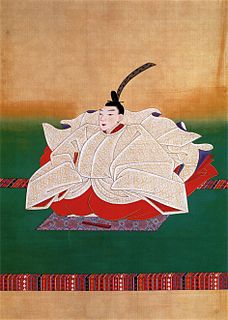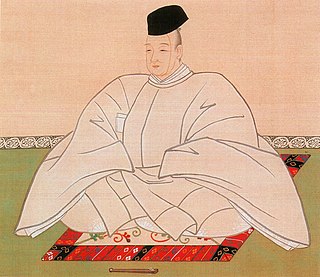 W
WEmperor Go-Momozono was the 118th Emperor of Japan, according to the traditional order of succession. He was named after his father Emperor Momozono. The wording of go- (後) in the name translates as "later", so he has also been referred to as "Later Emperor Momozono", "Momozono, the second", or "Momozono II". Go-Momozono became Emperor in 1771, but had a short reign that lasted to his death in 1779. Events during his reign were confined to a series of natural calamities that occurred in 1772, aside from that the political situation with the Shōgun was quiet. Things came to a head towards the end of Go-Momozono's life in the form of a succession issue as the Emperor had no eligible successor. As a result, he hastily adopted a son on his deathbed who later became the next Emperor.
 W
WEmpress Go-Sakuramachi was the 117th monarch of Japan, according to the traditional order of succession. She was named after her father Emperor Sakuramachi, the word go- (後) before her name translates in this context as "later" or "second one". Her reign spanned the years from 1762 through to her abdication in 1771. The only significant event during her reign was an unsuccessful outside plot, that intended to displace the shogunate with restored Imperial powers.
 W
WEmperor Higashiyama was the 113th emperor of Japan, according to the traditional order of succession. Higashiyama's reign spanned the years from 1687 through to his abdication in 1709 corresponding to the Genroku era. The previous hundred years of peace and seclusion in Japan had created relative economic stability. The arts and theater and architecture flourished.
 W
WEmperor Kōkaku was the 119th Emperor of Japan, according to the traditional order of succession. Kōkaku reigned from 16 December 1780 until his abdication on 7 May 1817 in favor of his son, Emperor Ninkō. After his abdication, he ruled as Daijō Tennō also known as a Jōkō (上皇) until his death in 1840. The next emperor to abdicate of his own accord was Akihito, the Emperor of the Heisei Era, in 2019, 202 years later.
 W
WEmperor Momozono was the 116th Emperor of Japan, according to the traditional order of succession. Momozono's reign spanned the years from 1747 until his death in 1762. Momozono's reign was mostly quiet, with only one incident occurring that involved a small number of Kuge who advocated for the restoration of direct Imperial rule. These Kuge were punished by the shōgun, who held de facto power in the country. Momozono fathered two sons with his one and only lady in waiting, but he died at a young age in 1762. The line of succession fell to Momozono's sister, Princess Toshiko, who became Empress Go-Sakuramachi. Due to the young age of Momozono's sons, she also became empress regent to the future Emperor Go-Momozono until he became of age to rule.
 W
WEmperor Nakamikado was the 114th Emperor of Japan, according to the traditional order of succession. Nakamikado's birth name was Yoshihito before he became enthroned as Emperor in 1709, a reign that would last until 1735 with his abdication and retirement. As Emperor, Nakamikado had an increasingly warmed relationship with the shogunate in part due to his father's efforts. Relations warmed up to the point of family marriage talks but these fell through due to the sudden death of the potential Shōgun groom. Events that surrounded the Emperor included at least 2 major earthquakes, the largest Ryukyuan diplomatic mission of the Edo period, the Kyōhō Reforms, and the Kyōhō famine. It is unclear what role if any the Emperor had in these concurrent events as the role of "Emperor" was a figurehead at the time. Nakamikado's family included at least 14 children mothered by his wife, and 5 concubines. Nakamikado abdicated the throne in 1735 in favor of his first son, and died two years later.
 W
WEmperor Sakuramachi was the 115th Emperor of Japan, according to the traditional order of succession. Sakuramachi's birth name was Teruhito before he became enthroned as Emperor in 1735, a reign that would last until 1747 with his retirement. As with previous Emperors during the Edo period, the Tokugawa shogunate had control over Japan. The Emperor's role was a religious figure who performed limited duties. This changed when Sakuramachi was granted permission from the Shōgun to restore some Imperial rites. Ceremonies such as the Harvest Festival that had previously been absent for over 250 years were now allowed. Sakuramachi had one wife and a concubine with whom he fathered 4 children. His first son would go on to become Emperor Momozono, while his second daughter would later be Empress Go-Sakuramachi. Sakuramachi died on 28 May 1750, which was almost three years after his abdication.